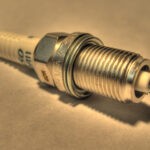5 Reasons Why Europeans Hate Automatic Transmission
More than 1 million units of Ford were sold in Europe during the year 2017. Out of which, only 10% had an automatic transmission. So, the question arises why aren’t automatic transmissions popular in Europe?

Why aren’t Automatic Transmissions Popular in Europe?
Automatic transmissions are not popular in Europe, due to their universal cons like increased fuel consumption, higher cost, sudden gear shifts, higher repair cost, and frequent breakdowns.
But they’re disliked in Europe even more due to some specific reasons like they don’t adjust well to the hilly terrains of Europe.
Moreover, people in Europe seem to be enjoying their manual cars more. They find them reliable, efficient, and long-lasting. Most Europeans describe driving a manual car more engaging and fun experience.
Let’s take a closer look at the dynamics of the European car market and try to find out the actual reasons.
5 Reasons Why Europeans Hate Automatic Transmission
1. The Bumpy & Twisted European Terrains
All these factors come together to become a reason why European people hate automatic transmissions.
- Unlike American & Asian continents, European topography is hillier & mountainous.
- The cars with automatic transmissions don’t adapt well on mountainy roads.
- The European roads are narrow and twisted as well.
- And the climate in Europe is cold, damp, and snowy.
It is a well-known fact that while climbing a slope, the vehicle needs to be in a smaller gear. The power output of the engine shaft is a trade-off between rotations per minute and torque. In simpler terms, imagine a car on the jack with its wheel rotating. Now, what will happen if you try and stop that wheel, obviously it will slow down.
Similar is the case with the output shaft of the engine. When the load on it is increased, its speed of rotation decreases. As a result, more torque (force per rotation) is produced instead of the number of rotations.
According to a geological survey report, more than 36% of Europe can be regarded as mountains. The automatic transmission takes some time to respond to inclined roads. The reason is that automatic transmission uses a torque converter to transmit power from the engine shaft to the output shaft.
As soon as an inclined road is detected, a signal in the form of the increased load is sent to the torque converter. Upon receiving that signal, automatic torque converter turbine allows more fluid into itself. As a result, rotations per minute of the shaft are reduced, and power output is increased.
Trending Video: How to Easily Bring Back to Life any Old Car Battery and Save Tons of Money (click to watch)
Sometimes on bumpy terrain, the inclination of the road changes frequently. It is 30 degrees at one place, then it is 60 degrees suddenly. So, you need to frequently shift from 5th gear to 2nd gear, maybe. You can have this pleasure in manual transmission. But an automatic transmission will gradually shift from 5 to 4, then 4 to 3, and at last 3 to 2. This feedback will take time.
The driver will be more at ease if he has this control in his hand. Otherwise, he has to rely on the brain of the car, the ECU. Any faulty signal or delayed one can cause fatal accidents.
This is exactly why all racing cars have manual transmission. In the automatic transmission, a car would not shift the gear until it is commanded to do so by an electro-mechanical switch or pedal.
The roads in Europe are twisted and trickier. The driver needs to maneuver at times to make sharp cuts. Cars with automatic transmission can take time to respond to such situations.
The automatic transmission has been known to fail in a snowy environment. The likelihood of snowfall in most European countries is higher. Automatic transmission is prone to jam in these scenarios.
And combine snowy weather with hilly and twisted roads, you have your answer to why Europeans hate automatic transmission because it has brought them pain and misery.
Also read: Manual or Automatic- which Transmission Last Longer?
2. Limited Driving License
You get only an automatic car license in most European countries if you cannot drive a car with manual transmission. As authorities believe that driving a manual car is more difficult and requires a higher level of skill and expertise.
Most European countries offer driving licenses only for an automatic vehicle if you’re unable to pass the driving test on a manual car. The rules for obtaining a driving license in the EU are more strict. You must be able to drive a manual car if you want to get a license to drive all kinds of cars.
Driving a manual car requires a higher level of skill. In automatic cars, you just smash your foot on the gas pedal, and boom, your car starts moving. To stop, you simply need to apply brakes. Some cars offer a quick brake pedal too. Otherwise, there are only two of these which need an operation.
But in the case of a manual transmission, you have to properly coordinate your foot movements. You cannot go too harsh on the clutch. You have to know that pressing clutch to what extent would ensure smooth engagement and disengagement of transmission. You closely need to monitor your foot movements if you’re going to drive a car with manual transmission.
3. The Higher Prices of Automatic Cars
Automatic cars often cost 10-20% more as compared to manual ones. This is due to the use of the latest technology and more moving parts. The rental value of automatic cars is also greater for a similar reason.
It is quite obvious that automatic cars are costlier than manual ones. The cars with automatic transmissions are based upon fairly latest technologies. The names like 8-speed and 10-speed automatic transmission, continuously variable transmission CVT are intended to portray a superior image of the car. This adds huge amounts of money to the price tag of a car.
You might be able to save an extra $2,000 to $3,000 by purchasing a manual car. As manual gear shifting mechanisms have fewer parts and they cost lesser.
Even the rates of rental cars are more when it comes to automatic cars as opposed to manual ones. Rental car agencies pose reasons that because automatic cars break down more often and require more maintenance that’s why they have to charge more in terms of rent.
You must be careful while booking a rental car online since you might end up paying double prices for renting an automatic car you didn’t even ask for.
Also read: Are Automatic Cars Good for Hills? Are Manuals Better?
4. Compromised Fuel Economy
Europeans are right in thinking that automatic cars consume more fuel due to losses in the torque converter. The auto transmission runs heavier as compared to manual, which also adds to fuel loss.
Automatic transmission indeed tends to run a little heavier. Due to which they might end up consuming more fuel. But if a rookie is driving a manual car, he might end up running it even heavier than the automatic car. As he might not be able to shift gears on time. Hence, you may experience a lower fuel efficiency despite being in a manual car.
The fuel economy of a manual car is slightly better than one with an automatic transmission. However, it is not always true. It was a thing in the past that automatic transmission used to consume more fuel than manual cars. But now, with the use of high-end technology, companies have introduced extremely fuel-efficient cars that run on an automatic transmission.
As it was explained above that, an automatic transmission uses a torque converter instead of a regular gearbox with a clutch. Strictly speaking, from the mechanical point of view, the torque converter is nothing but a turbine. It is only capable of transmitting 90% or, in some cases, up to 95% of power being offered at the input.
On the other hand, gear mechanisms and linkages have been used for way too long. They offer a mechanical efficiency of more than 98%. This is by far more than any other transmission system.
But with the latest technologies like CVT, things are different. Still, many people in Europe have a perception that manual cars consume less fuel than automatic ones. And perceptions matter the most indeed!
Also read: 20 Best Cars in Europe (Almost Failure-Free)
5. Higher Maintenance Cost
The complexity of the automatic system can lead to a higher cost of repairs. Moreover, automatic cars break down more, and their replacement parts are extremely expensive.
The cars with automatic transmission are more prone to breakdown. Hence people have to bear a higher cost of maintenance. The reason for more breakdowns is simply because the automatic transmission has more moving parts.
The average repair cost of a car with manual transmission will be somewhere between $200-$500. On the other side, if an automatic car broke down, it might not go as lightly on your pocket. The cost of repairing an automatic transmission can vary between $800-$3,000.
Are Cars with Automatic Transmissions Going to be More Popular in Europe?
Actually yes, even though there is a long list of reasons why Europeans hate automatic transmission, still its popularity is on the rise. In the first 4 months of 2021, more than 30% of all cars sold in Europe had an automatic transmission.
This is a great advancement if you consider statistics from 2017,18, or 19. The Europeans are considering the fact that new automatic cars are far superior to those being produced in the past. They’re reliable, adaptable to inclined roads, multi-purpose, and fuel-efficient. On top of that, the price gap between automatic and manual cars is catching up. If you want to buy an automatic car now is the best time to do so.
Hence, the future of the automatic car in Europe is bright. As more and more people are buying them!
Reference:
media.ford.com, caranddriver.com, edmunds.com, eea.europa.eu, rd.com, blog.getmyparking.com






